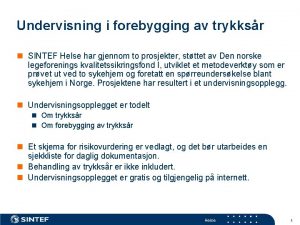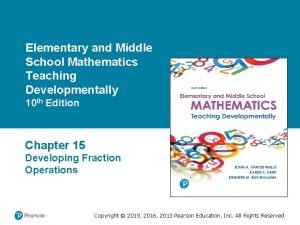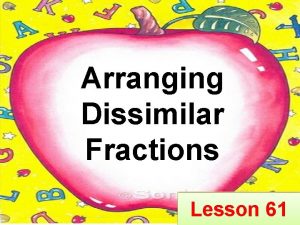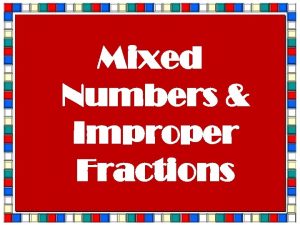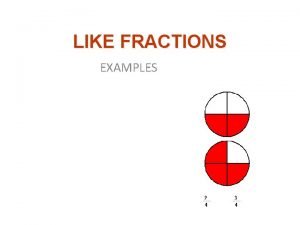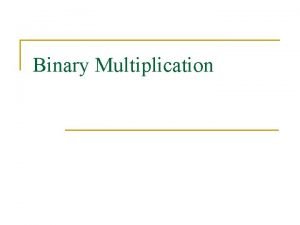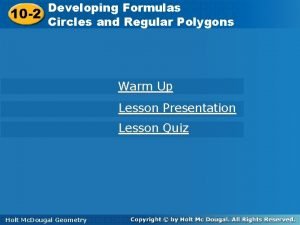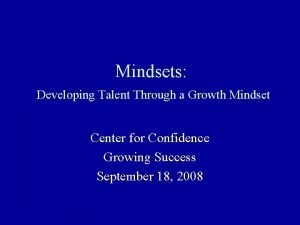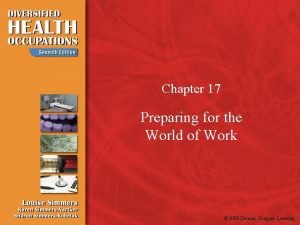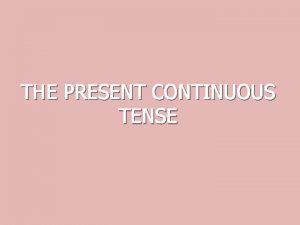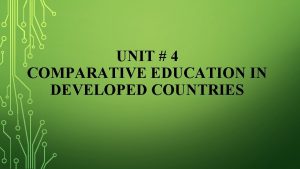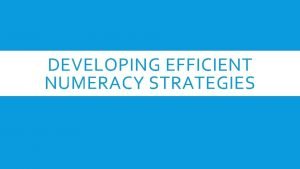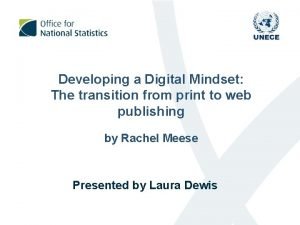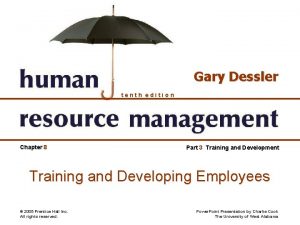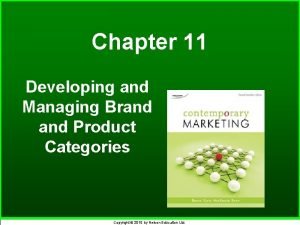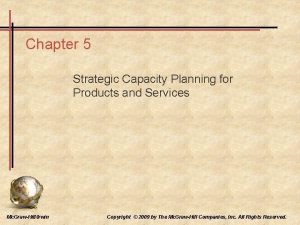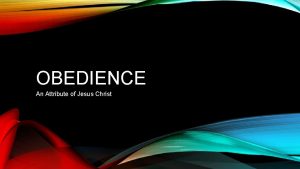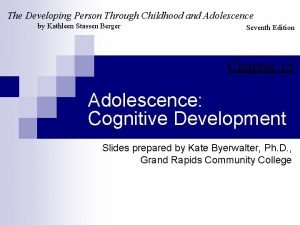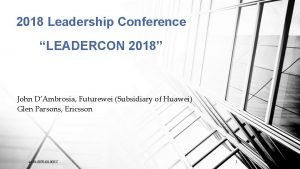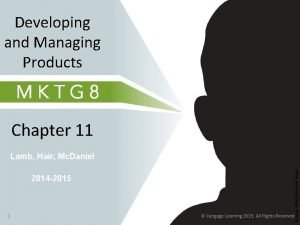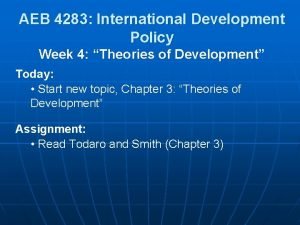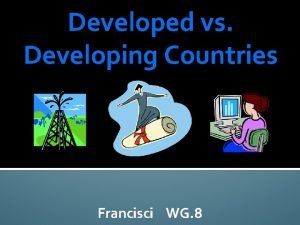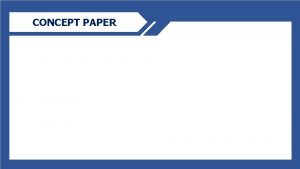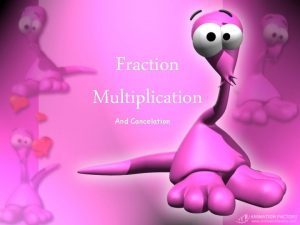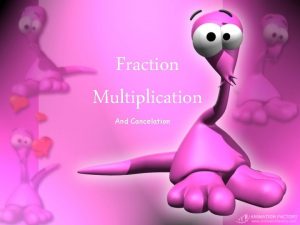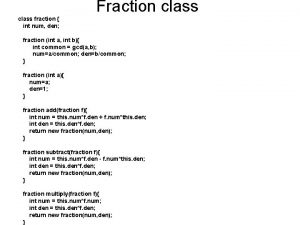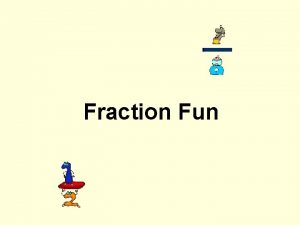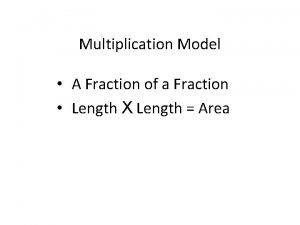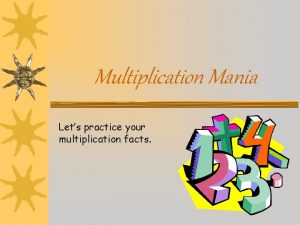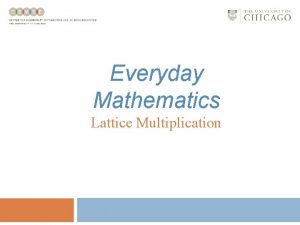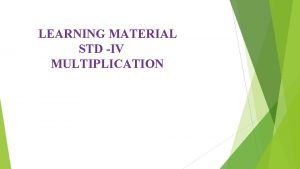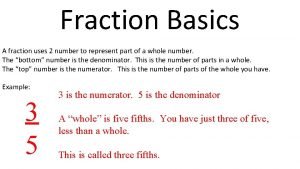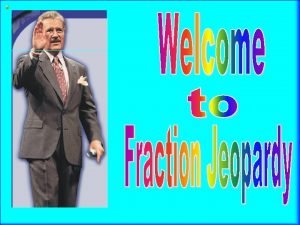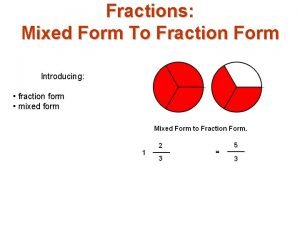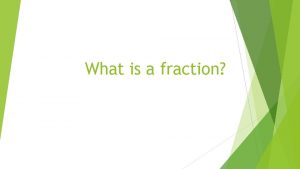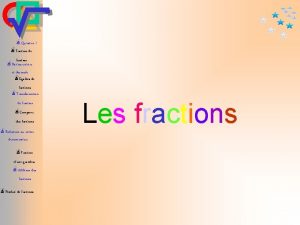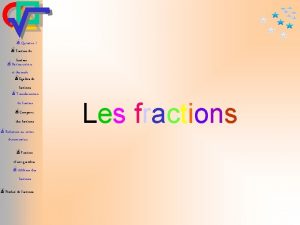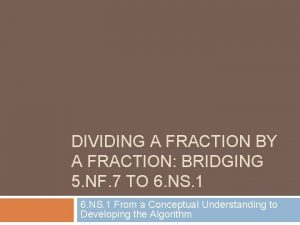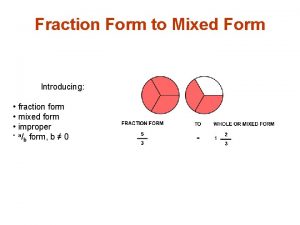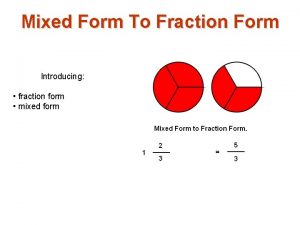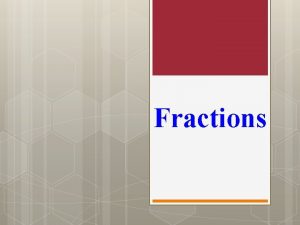th Developing 5 Graders Understanding of Fraction Multiplication































- Slides: 31

th Developing 5 Graders’ Understanding of Fraction Multiplication Researchers: David Bright & Kayla Davis Mentor: Dr. Jathan Austin

Introduction • • Wilson et al. (2011) stated “It is well documented that even in middle school students continue to struggle with concepts of rational numbers” (p. 231). In particular, students show difficulty in fraction multiplication. Tsankova et al. (2010) stated "it has been found that students often have difficulties applying the algorithm with flexibility” (p. 281). Visual models were emphasized in this study to provide students with the opportunity to identify fraction multiplication as a conceptual relationship between rational numbers (Webel et al. , 2016).

Purpose and Research Question • We aimed to design methods to build students’ conceptual understanding of fraction multiplication. • What are the characteristics of an instructional sequence that helps students understand fraction multiplication?

Theoretical Framework Conceptual Understanding • integrated and functional grasp of mathematical concepts which allows students to connect ideas Procedural Fluency • ability to carry out procedures accurately, flexibly, efficiently and appropriately Strategic Competence • ability to formulate, represent and solve mathe matical problems Adaptive Reasoning • capacity for logical thought, reflection, explanation and justification Productive Disposition • inclination to see mathematics as useful, sensible, and worthwhile, as well as belief in one’s ability (Kirkpatrick et al. , 2001. )

Learning Trajectory (Confrey et al. , 2012)

Methodology •

Methodology • During the pre-interviews there were some problems that revealed the extremes of our students’ thinking. • They are as follows:


The members of a cross country team like to continue their training on their own during the summer. Nero ran 1 ½ miles one day. a. Lily ran 3 times as far as Nero. How far did Lily run? b. Jorge ran ¾ times as far a Nero. How far did Jorge run? c. Belinda ran 2 1/3 times as far as Nero. How far did Belinda run? (Illustrative Mathematics b, n. d. )

Procedure • • Teach and audio/video record lesson Transcribe audio and video Analyze the transcript and make conjectures Create lesson draft based on conjectures Create formal lesson plan after critique Practice lesson with mentors and fellow undergraduate researchers Teach lesson to students Repeat seven times

Instructional Cycle Analyze students' assessments Gather written and recorded data from interaction with students Pose selected tasks to group of students Establish appropriate learning goals Select tasks to develop students' thinking

Initial Assessment Results Most students initially struggled to use visual models to solve problems. They had less trouble with execution of procedures.

Initial Assessment Results: Student Work

Initial Assessment Results: Student Work T: So, For a certain brand of orange soda, each can contains 4/15 cup of sugar. Part a is how many cups of sugar are there in six cans of this orange soda. S 1: Hmmm. This is hard. T: Yeah? What are you thinking about it? S 1: That you have to divide 4/15 into 6 cans.

Initial Assessment Results: Student Work

Week 2 Instruction For this week of instruction we decided to encourage the use of specific language, such as “groups of”, along with the use of drawing and pattern blocks. We introduced whole number times fraction number sentences and word problems that involved modeling repeated addition. Students’ work on the problems revealed their understanding of language and visual models, as exemplified in the classroom artifacts below.

T: Do you know how you can draw a picture of 3 x 5? S 2: Uh, three—uh not really a picture. I was going to say, you can do like fractions with it because 3/15 x 3/15. T: Okay. What about you -------? Did you have a different answer? S 3: You can do can like circles—three circles with five in each circle.

S 2 Work S 3 Work

Week 3 – 5 Instruction Students solved and modeled a series of word problems involving multiplication of fractions by whole numbers. Students were hesitant to use conceptual fraction models so we introduced a new modeling technique that forced the students to solve problems without using algorithms.


S 1: *lays out 5 wholes and divides the rest with a pencil then cuts 3 wholes into fifths* S 2: *stares at all pieces* S 3: *divides every piece with pencil and then cuts every piece into fifths*


Week 6 – 8 Instruction Due to students’ difficulty constructing models in the previous weeks, we decided to take a different approach that would introduce the students to different models. The instruction during the final three lessons would also give the students multiple opportunities to explain and describe the models in discussion.

T: So what, after discussing these, what can we notice about our models in the middle there? Any similarities, any differences? S 4: They’re all representing one equation? T: Are they? S 4: Yeah. S 3: That the number sentence is 2/5 times 12.


Post-Assessment Results By the end of the seven lessons, students showed improvement with not only creating models to go with number sentences but also creating stories to go with pre-made models.


S 2: Uh, this person got 4/20 of a car – T: Of a car? S 2: Mhmm. T: Okay *chuckles* S 2: Then he multiplied it by 5 and then he got the full car. Because that’s only what the insurance claimed.


Reflection and Discussion • • • The standard in our learning progression that was most difficult to obtain was solving real world problems involving fractions and mixed numbers. Students had difficulty creating appropriate models to coincide with the context of the word problems. For example, when asked to show 2/3 of 3, their models initially depicted 3 groups of 2/3. Students seem to benefit from having to explain their thoughts to the class step-by-step. Once they were put in the “teacher’s” position they generally realize any mistakes they may have made. Data from our study also point to the conceptual difference between a fraction times a whole number versus a whole number times a fraction. This distinction needs explicit attention. Future research might examine the potential benefits of teaching the case of a fraction times whole number first, in order to examine the impact of such an instructional sequence on students’ learning.

References • Confrey, J. , Nguyen, K. H. , Lee, K. , Panorkou, N. , Corley, A. K. , & Maloney, A. P. (2012). Turn. On. CCMath. net: Learning trajectories for the K-8 Common Core Math Standards. Retrieved from http: //www. turnonccmath. net • Illustrative Mathematics a. (n. d. ). 5. NF Connor and Makayla discuss multiplication. Retrieved from: https: //www. illustrativemathematics. org/content-standards/5/NF/B/4/tasks/321 • Illustrative Mathematics b. (n. d. ). 5. NF Cross country training. Retrieved from: https: //www. illustrativemathematics. org/contentstandards/5/NF/B/4/tasks/2080 • Kilpatrick, J. , Swafford, J. , & Findell, B. (Eds. ). (2001). Adding it up: Helping children learn mathematics. Washington, DC: National Academy Press. • • • Tsankova, J. K. & Pjanic, K. (2010). The area model of multiplication of fractions. Mathematics Teaching in the Middle School, 15(5), 281 -285. Webel, C. , Krupa, E. & Mc. Manus, J. (2016). Using representations of fraction multiplication. Teaching Children Mathematics, 22(6), 366 -373. Wilson, P. H. , Edgington, C. P. , Nguyen, K. H. , Pescosolido, R. C. , Confrey, J. (2011). Fractions: How to share fair. Mathematics Teaching in the Middle School, 17(4), 231 -236.
 Ounces of ice cream in a large milkshake
Ounces of ice cream in a large milkshake Leiring i seng
Leiring i seng Transition words for 6th graders
Transition words for 6th graders Inventors from ohio
Inventors from ohio Chapter 15 developing fraction concepts
Chapter 15 developing fraction concepts How to find a fraction
How to find a fraction Alin sa grupo ng fraction ang magkakatumbas
Alin sa grupo ng fraction ang magkakatumbas Mixed fraction
Mixed fraction Like fraction examples
Like fraction examples Binary multiplication example
Binary multiplication example 10-2 developing formulas for circles and regular polygons
10-2 developing formulas for circles and regular polygons Developing talent through a growth mindset
Developing talent through a growth mindset Placenta
Placenta Chapter 17:3 completing job application forms
Chapter 17:3 completing job application forms Present continuous tense they play the football
Present continuous tense they play the football Comparative education in developing countries
Comparative education in developing countries Developing efficient numeracy strategies
Developing efficient numeracy strategies Digital mindset assessment
Digital mindset assessment Chapter 8 training and developing employees
Chapter 8 training and developing employees Brand &+product type l1
Brand &+product type l1 Breadth and scope of international marketing research
Breadth and scope of international marketing research Developing capacity strategies
Developing capacity strategies Developing christlike attributes
Developing christlike attributes The developing person through childhood and adolescence
The developing person through childhood and adolescence Dr renee d'ambrosia
Dr renee d'ambrosia Developing and managing products
Developing and managing products The developing person through the lifespan
The developing person through the lifespan Strategic prospecting plan
Strategic prospecting plan Developing facilitation skills
Developing facilitation skills Harrod domar growth model
Harrod domar growth model What is a developing country definition
What is a developing country definition Genus in concept paper
Genus in concept paper

